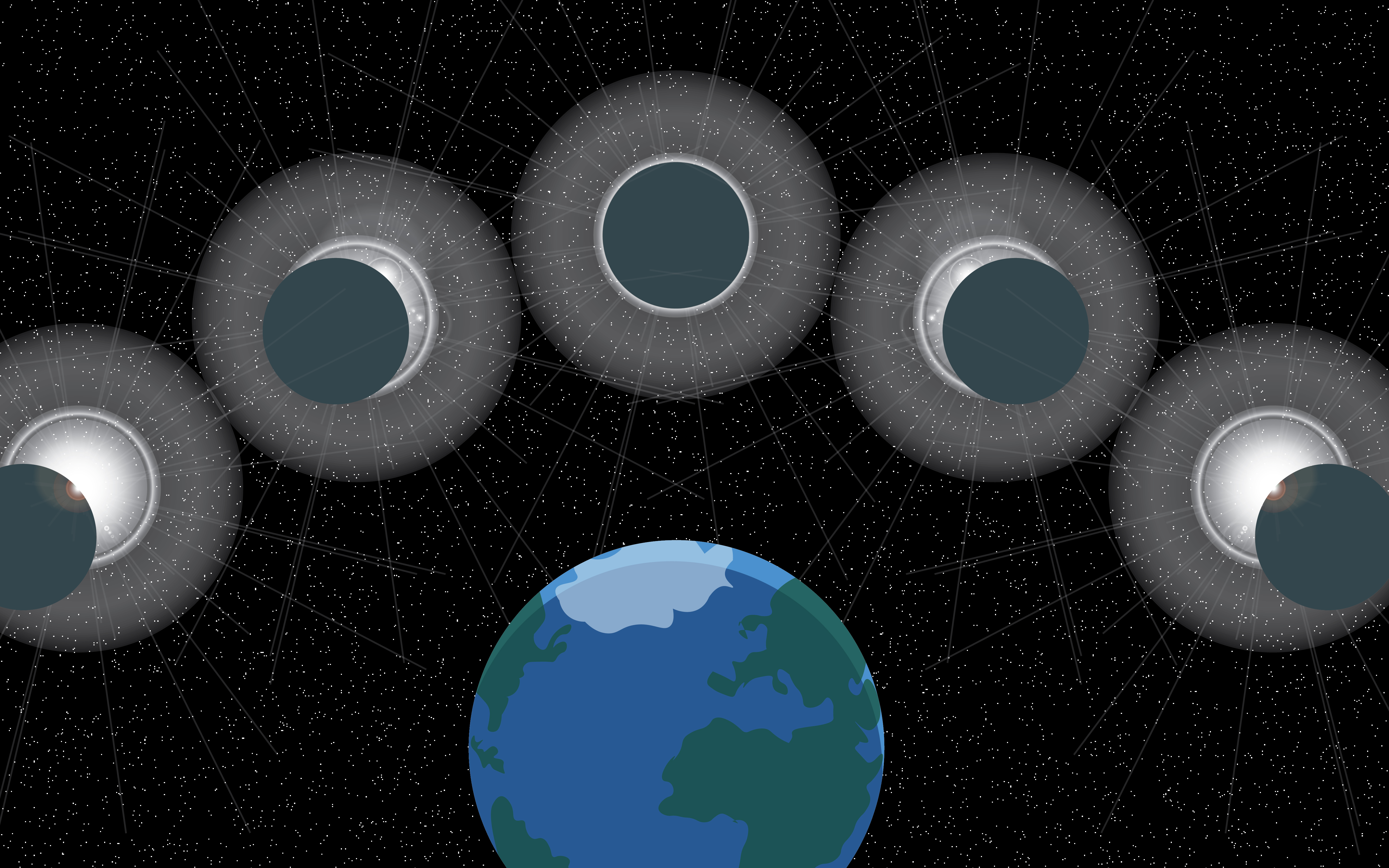Student, researcher talk astronomy

Today, various locations in Mexico, the United States and Canada will be blanketed in darkness as a total solar eclipse crosses the planet.
The moon’s shadow will creep along a stretch of Earth that is known as the “band of totality,” resulting in total darkness along that path. Although the Rio Grande Valley does not sit within the “band of totality,” residents will still be able to view the moon passing between the earth and sun.
Constantine Poulos, a management junior and astrophotographer, told The Rider in an interview Thursday that he plans to travel to Kerrville, which is north of San Antonio, for a better view of the eclipse.
“This time, the moon will completely block out the sun and it will cast a huge shadow,” Poulos said. “It will be very impressive. You will be able to see the sun’s atmosphere.”
The junior photographed October’s annular eclipse and stitched together a sequence of the process, as previously reported by The Rider. Today, he plans to do the same.
“I’m using the same camera, which is a Nikon D50, but this time, I purchased a telephoto lens so we can get a little closer images,” Poulos replied when asked about his camera equipment.
Total eclipses cross the country once every 20 years and “are quite rare,” he said, adding that he has been told “it is a very shocking event.”
“This will be my first time,” Poulos said. “I’m very excited. I’m looking forward to witnessing it, like, the awe and the amazement.”
UTRGV physics doctoral candidate Richard Camuccio, also a graduate researcher for the Center for Gravitational Wave Astronomy on the Brownsville campus and the Transient Optical Robotic Observatory of the South in Cordon Macón, Argentina, said the “band of totality” is “about 115 miles wide.”
Camuccio said the entire eclipse process takes a couple of hours, but those in the “band of totality” will experience “about four and a half minutes” of total darkness.
He said total eclipses are rare in the United States because the moon “doesn’t orbit perfectly parallel.”
“Sometimes, it’s at an angle,” Camuccio said. “Sometimes, it’s above the Earth. Sometimes, it’s below. … Because of that, there’s only a few times where the moon actually perfectly aligns.”
Poulos and Camuccio each encouraged the use of special solar eclipse glasses to avoid eye damage, including blindness.
Other than eclipses, Camuccio said meteor showers are another astronomical event to look forward to.
“There’s seasons of meteor showers that pretty much happen … the same time every year,” he said. “Just look up in the sky during the right time. You’ll be able to see little fireballs and little pieces of debris coming into the atmosphere.”
The Lyrids meteor shower takes place from April 15 to April 29. The shower will peak April 21-22, according to amsmeteors.org.
“Though not as fast or as plentiful as the famous Perseids in August, Lyrids can surprise watchers with as many as 100 meteors seen per hour,” according to science.nasa.gov.
The Lyrids meteor shower radiates from the Lyra constellation and can best be viewed from the Northern Hemisphere during the “dark hours,” which take place after moonset but before dawn, according to NASA’s website.





